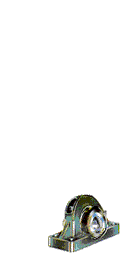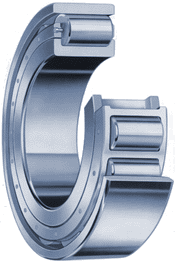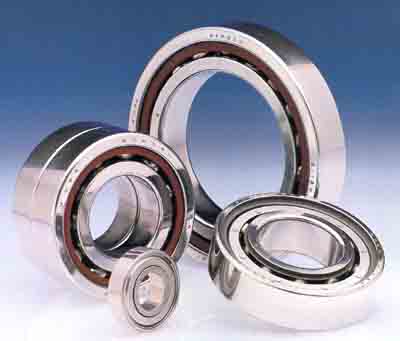

Tachyon Tear Down What's Inside?
One of the touted features of Microtech's new Tachyon balisong (if you haven't read my review, click here) is that it can be disassembled by the owner with fairly simple tools.
The warranty card included with Tachyon states twice: "Disassembly will void warranty."
For reporting this in my review article, I was chastised in the Balisong Forum on Bladeforums.com. I was actually accused of bad journalism and even libel (click here to read the forum thread in question). I was accused of not having double-checked my facts. Well, with the official, printed warranty card in my hand, I didn't feel the need to check any further.
(click on the image for a higher-resolution view, 722K)
In that same forum thread, Mike Turber replies:
The warranty card is generic meaning it covers all MT knives and I did not think about that issue when I shipped the knives. So regardless of what the warranty card says here is how the warranty will work in regards to the Tachyon.
Disassembly of the knife, in and of itself will NOT void the warranty. If you lose or damage the busings or screws during this procedure there WILL be a charge to replace them. This includes the latch as well. All the knives are assumed to be shipped in perfect condition and obviously no screws are shipped stripped as they would not thread properly. So in that instance I would assume that if you get a stripped screw somehow, blame would have to be directed towards you. That is the only grey area I can see.
So in a nutshell you can disassemble any Tachyon completely without voiding your warranty. If you strip a screw or screw head while re-assemling the knife you WILL void the warranty on that part...
So take them apart and do with them as you will. I doubt there will be a big issue as there are so few parts to go wrong. There are no springs or levers. Just don't lose the screws or bushings and you should be just fine.
So, with that little issue cleared up,
(click on the image for a higher-resolution view, 745K)
Disassembling the pivot pins and removing the handles requires a size T10 Torx (Torx is a registered trademark of the Camcar division of Textron Corporation) driver. Torx screws have become very common in the automotive industry and are rapidly achieving popularity in other applications too. So, T10 size Torx drivers are readily available at hardware and auto parts stores.
Each of Tachyon's pivot joints consists of a "Chicago screw," two washers, and a bushing.
A Chicago Screw is a type of threaded fastener that consists of a screw and a sleeve that the screw mates into. Microtech is by no means the first balisong maker to use Chicago Screws for their pivot pins. The joints on the Benchmade 42, 43, 47, 40T, 49, and 31 use Chicago Screws. And many custom makers have used Chicago Screws for decades before that.
There was a report published in the Balisong Forum on Bladeforums.com (click here to read the thread) that Tachyon's pivot joints contain roller bearings.
A roller bearing is a very complex bit of hardware used to reduce friction in rotating joints, especially for high-speed applications. They're also often used to keep a rotating shaft centered when it has to pass through some other part or simply to hold a rotating shaft for any reason. Here's a nifty animation from Cooper Bearings Company that shows what's inside of a roller bearing.

As you can see, it's a pretty complicated assembly. Basically, it consists of two concentric rings with bearings, usually ball bearings or pin (aka needle) bearings between them. Here are some more pictures from The Torrington Company and The ZXZ Bearing Company that further illustrate roller bearings.



As you can see, they're a pretty complicated sub-assembly. The roller bearing on the left in the pictures above actually contains upwards of forty precision parts.
Microtech wouldn't be the first balisong manufacturer to try roller bearings in their pivot pins. I have several balisongs with roller bearings. But, in my opinion, they really don't make that much difference. I've found that good lubrication reduces friction enough that roller bearings aren't required. Roller bearings small enough to fit into the pivot pins of a balisong are, as you might imagine, rather expensive since the parts involved end up being tiny, very precise, and difficult to assemble.
What I found inside my Tachyon was NOT roller bearings but just solid bushings. In this picture, you can see them actually sitting on a mirror. No bearings here folks.
(click on the image for a higher-resolution view, 401K)
Microtech is also not the first balisong maker to use bushings in their pivot joints.
(click on the image for a higher-resolution view, 816K)
What is new and unique in Microtech's pivot joints are those washers. Oh, washers have been used in balisong joints for quite some time. But, Microtech's are made of Phosphor Bronze. According to www.smallparts.com, "Exceptionally thin, these Flat Washers are valuable in applications requiring friction reduction. Phosphor Bronze resists wear, stress and marine corrosion, and can be polished to a rich, golden shine."
In a balisong pivot joint, we want everything to be very slippery, very low-friction. Surface finish has a lot to do with this. A smooth, polished surface will always have less friction than a rough one. But, some substances are just more slippery than others. Teflon (a registered trademark of DuPont Corporation), for example, is very slippery. But, Teflon is also very soft. You can buy Teflon washers. But, in the pivot joints of a balisong, they'd be quickly destroyed. Phosphor Bronze on the other hand, is very hard. But, Phosphor Bronze is also naturally slippery. It's not as slippery as Teflon, but it's a lot more slippery than either steel or titanium.
Assemblies made with Phosphor Bronze parts are sometimes called "self lubricating." Adding the Phosphor Bronze washers to Tachyon is a little like adding a permanent coating of oil.
So, one might then wonder why I found everything inside my Tachyon covered with a light lubricant/oil of some sort? The answer is that while Phosphor Bronze is slippery, it's not as slippery as an oiled interface is and it's probably not slippery enough for a balisong pivot joint.
Washers in general are often included in joints such as balisong pivots to reduce galling. Galling is the wear that results when two surfaces rub against each other. While we often think of titanium as a very strong material (and it is) strong does not necessarily mean hard. Blade steel is very hard. When hard blade steel rubs against even titanium, galling can occur. Adding a Phosphor Bronze washer is the perfect solution.
Moving along, each handle is made of three parts. Two larger parts that have become known as the "slabs" and a third that I'll call the "back spacer" for lack of any better term. Each handle is held together with six small screws. Unless they're witting an article for a website, I really can't think of why anyone would want to disassemble their handles. You might, perhaps, to clean it out if it got really, really messy. But with flowing water or a sprayed solvent, you should be able to get most common dirt out. Maybe if, for example, you spilled paint or something onto your handle, you might want to disassemble it for a particularly detailed cleaning. Anyway, if you ever need to you can.
You'll need a T8 size Torx driver. T8 is a smaller Torx size and it's starting to boarder on being a jeweler's size. T8 drivers are a little bit harder to come by. You'll probably have to go to a specialty tool store. But, once you've got yours, six screws come out and your Tachyon handle falls apart.
(click on the image for a higher-resolution view, 615K)
As you can see, there's nothing really much to see inside the handles. So, unless you need to really clean out some terrible mess, I'd suggest not bothering to disassemble your handles.
(click on the image for a higher-resolution view, 538K)
The last potential place to disassemble your Tachyon is perhaps the most practical: the latch. One of the features of Tachyon is that the user can move the latch to either the Manila or Batangas positions or remove the latch entirely.
Disassembling the latch should be easy. It's just another Chicago Screw. Of course, you'll need yet another Torx driver. This time it's even smaller, size T6.
The real problem, though, is that as soon as you loosen the screw at all, the Chicago Screw sleeve will begin rotating as you try to remove the screw the rest of the way. The trick is to press down hard on the latch so that the latch compresses against the screw sleeve and keeps it from turning. It's still not a very good solution.
(click on the image for a higher-resolution view, 574K)
Of course, once you've got the latch off, it's your choice as to which handle you put it back on. It fits on either one.
(click on the image for a higher-resolution view, 573K)
All of the screws on Tachyon are supposed to be secured with thread locking adhesive. I now have four Tachyons. I have been unable to even budge some of the screws on some of my Tachyons. There have been reports in the forum of people breaking screw heads off trying to disassemble theirs. Obviously, there's plenty of thread locking adhesive on those screws.
But, some of the screws on some of my Tachyons have given no resistance to removal at all. There have been reports in the forum of people receiving Tachyons with screws visibly protruding and not even finger-tight. Other people have reported screws falling out as they manipulate their Tachyons. These screws apparently have no thread locking adhesive at all.
The amount of locking a thread locking adhesive gives depends on the type of adhesive used and also on the amount of adhesive used. Obviously, Microtech is having some problems with consistent application of the adhesive. This is a particular problem with the very small screws used on Tachyon. Even a low-strength thread locking adhesive can lock such small screws to the point where they can not be removed without breaking the screw's head if too much adhesive is applied.
You can read more about thread locking adhesives by clicking here.
The thread locking adhesive issue is a very minor one. I'm sure that it's just a little start-up issue as Microtech builds the first few batches of Tachyons. After taking a Tachyon apart, I'm pleased to say that this little issue is about all there is to complain about. All of the parts are very well-made and fit together like the proverbial Swiss watch.
If you decide to take your Tachyon apart, be aware that the screws used, especially the "slab" and latch screws, are very small and have very fine threads. It's very easy to over-torque these screws and break the head right off. It's also very easy to get such screws cross-threaded.
Tachyon is precision-machined. If you're doing it right, everything will fit perfectly and go easily. If something doesn't seem easy or perfect, don't force it; you're probably doing something wrong.
Because of the thread locking adhesive, I really don't recommend that you take your Tachyon apart unnecessarily. And, with ordinary use and care, I don't think that taking your Tachyon apart will ever be necessary. I just hope that you've enjoyed watching me take mine apart.
Now, if you'll excuse me, I've got to put humpty back together again.
(click on the image for a higher-resolution view, 686K)